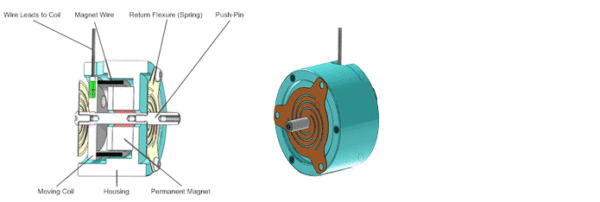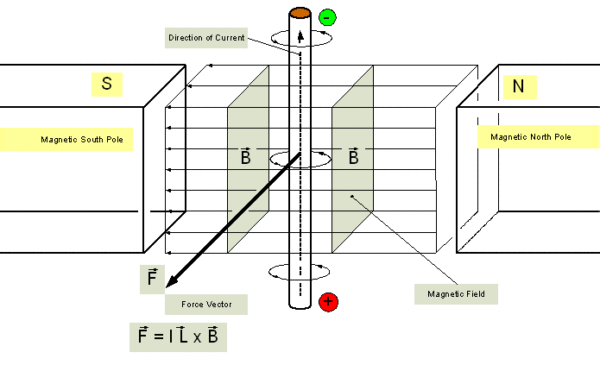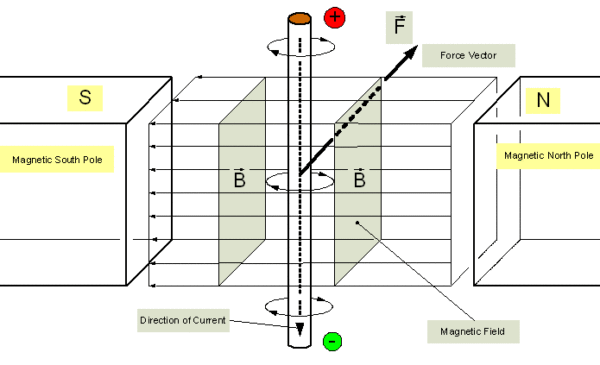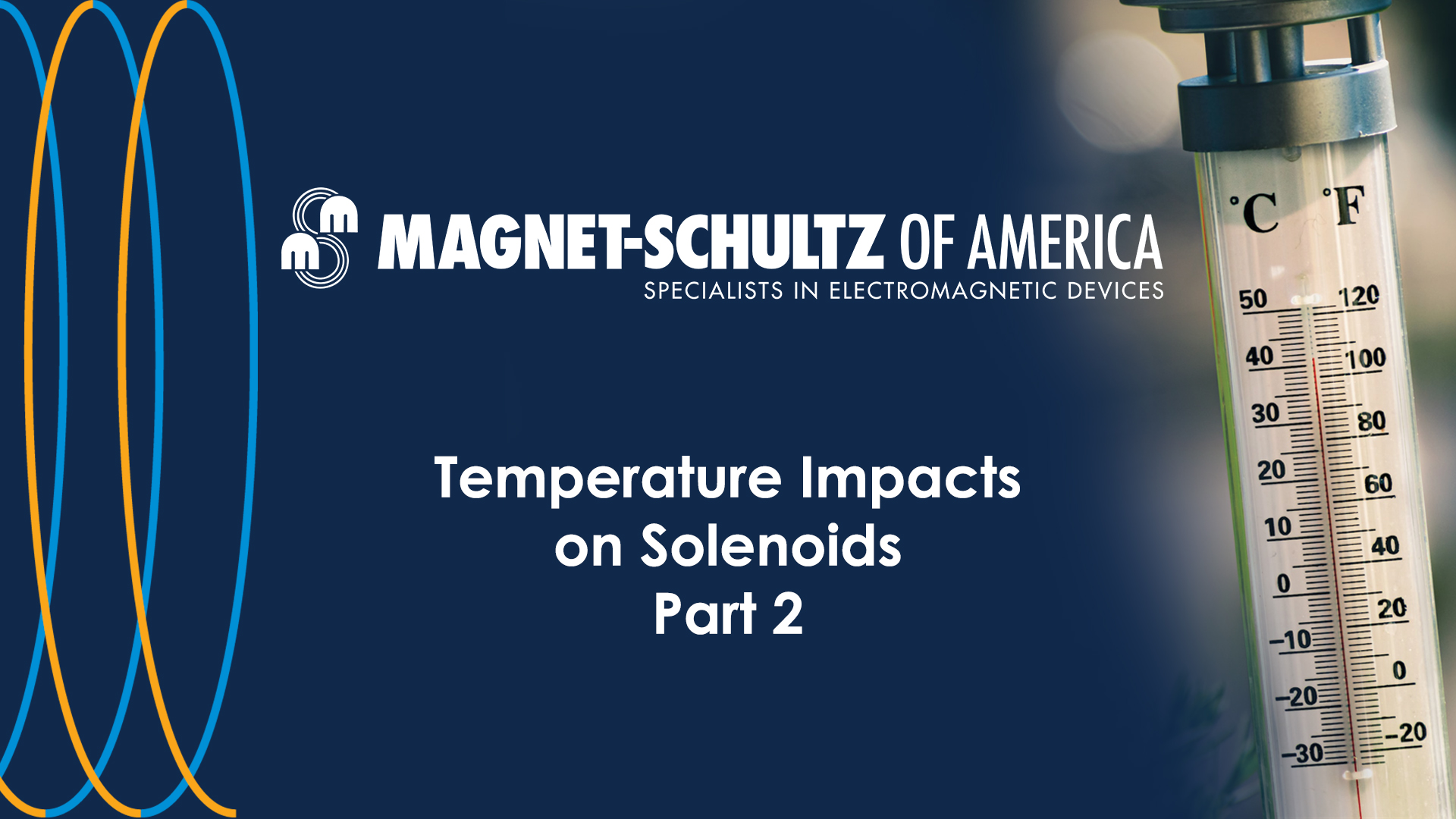Magnet-Schultz of America (MSA) defines and clarifies key characteristics, working functionality and benefits of Voice Coil linear actuators (also known as Lorentz Force Actuators).
OVERVIEW
A Voice Coil is a type of solenoid linear actuator within which an electrical coil and a permanent magnet interact to create high speed, precisely controlled linear motion. The term Voice Coil is derived from the fact that this type of electromagnetic device is used in audio speaker technology to rapidly move the cone of the speaker back-and-forth, thereby creating sound.
Commercial applications utilizing electromechanical Voice Coil solenoids and actuators take advantage of the many characteristics of these devices, so the name stuck, even though this broader range of uses has nothing to do with recreating music.
Typical Commercial Applications
- Coin sorting
- Medical diagnostic probes and equipment
- Precision focusing of lasers and other optical devices
- Vibratory mixing of dry particulates, powders and fluids
Key Voice Coil Features
Size and Performance—Compact in size, Voice Coil designs embody the smallest possible moving mass, enabling high rates of acceleration, actuation speeds and fast response times (varying with the moving weight, size, and input power handling capability).
Stroke (Range-of-motion)—Overall stroke is typically very short (<<3″), providing rapid changes in direction over the full range of movement.
Hysteresis is “Nearly” Zero—Friction is always present, so the force generated by the Voice Coil in one direction is “nearly” identical to the force in the opposite direction. Hysteresis can be optimized by improving the precision and quality of the bearing system.
Control—The addition of position feedback devices and electronic controls help Voice Coils achieve precise control of position, speed and acceleration.
Easily Customized—Voice Coil designs can be tailored to offer great range and flexibility in performance and packaging.
Value-Added Assemblies—Voice Coils can be designed to integrate with more complex mechanical structures, enhancing functionality and reducing the customer’s final assembly effort/cost.
Advantages Over Conventional Solenoids
- Higher acceleration and operating speeds
- Lower power consumption
Voice Coil Components and Construction
- Magnetically permeable housing
- Lightweight coil, wound with magnet wire and connected to lead wires
- Permanent magnet, typically Neodymium
- Push pin, from which useful work is derived
- Return flexure or spring (optional)
This simple construction provides a reliable, long-lived system.

Voice Coil Design Paradigms
Moveable Coil Approach (Depicted Above)—provides higher acceleration, operating speeds and forces, and shorter overall body lengths
Moveable Magnet Approach—reduces wear on the lead wires, allows for smaller coil diameters and utilizes an integrated bearing system—improving hysteresis and operating life
THEORY OF OPERATION
Basic Magnetic Theory
Magnet wire is wound around a bobbin, creating a coil. Applying a voltage across this coil electrically charges the particles in the wire, creating a flow of electrical current.
This applied voltage and resulting flow of charged particles create a magnetic field. The polarity of this field is directly related to the polarity of the voltage source.
Voice Coil Theory: “Lorentz Force”
For Voice Coils, only in the small portion where the coil’s magnet wire passes through the field of the permanent magnet will these moving/charged particles induce a magnetic force. This force pushes the wire/coil in a direction which is related to the polarities of the applied voltage and the permanent magnet.
This force is called a “Lorentz Force”. For this reason, Voice Coils are also called Lorentz Force Actuators. A visual depiction of this phenomenon, and the mathematical equation for same, are below:

Reversing the applied voltage reverses the direction of the current/charged particles, and the polarity of the induced magnetic field. This action reverses the direction of the Lorentz Force, which then pushes the coil in a direction opposite to that described above. A visual depiction of this reverse direction phenomenon is below:

Readers who wish to explore more in-depth Voice Coil theory may enjoy perusing the following links:
- George P. Gogue Joseph J. Stupak, Jr., G2 Consulting
- Bill Black, et al in PCIM Power Electronics Systems, July 1993
Operating Characteristics
Speed, Acceleration and Response Time—Higher currents through the coil result in higher magnetic flux densities, increased acceleration and speed of movement. Response times vary with moving weight, size and applied power.
Actuation Force—The flux density of the magnetic field and the resulting linear actuation force are proportional to the magnitude of applied voltage/current. Higher currents provide greater force.
Stroke/Position—Linear movement can range from less than one micron (0.00004”) to 3″, depending on the Voice Coil’s size. In conjunction with LVDT style position sensors, precise positioning to 0.1 microns can be achieved.
Thermal Considerations
Increasing the electrical power generates higher levels of heat within the coil. As coil heat rises, so does coil resistance, reducing current flow, magnetic flux densities, operating speed and actuation force (law of diminishing returns).
Overall performance is limited by the amount of heat that can be both tolerated by and removed from the system. Voice Coil systems must be designed for maximizing removal of heat from the coil to prevent diminished operational performance, as well as physical damage to the device.
Voice Coils from MSA
The diverse demands of every application are perfectly served by Magnet-Schultz of America’s skill relative to designing and producing custom voice coils for all applications and markets.
As a leading manufacturer of standard, specialty and custom Electromagnetic devices—Electromechanical and Electrohydraulic—MSA’s advanced engineering, innovative design and lean manufacturing capabilities enable our customer’s products to outperform their competition.







Leave A Comment